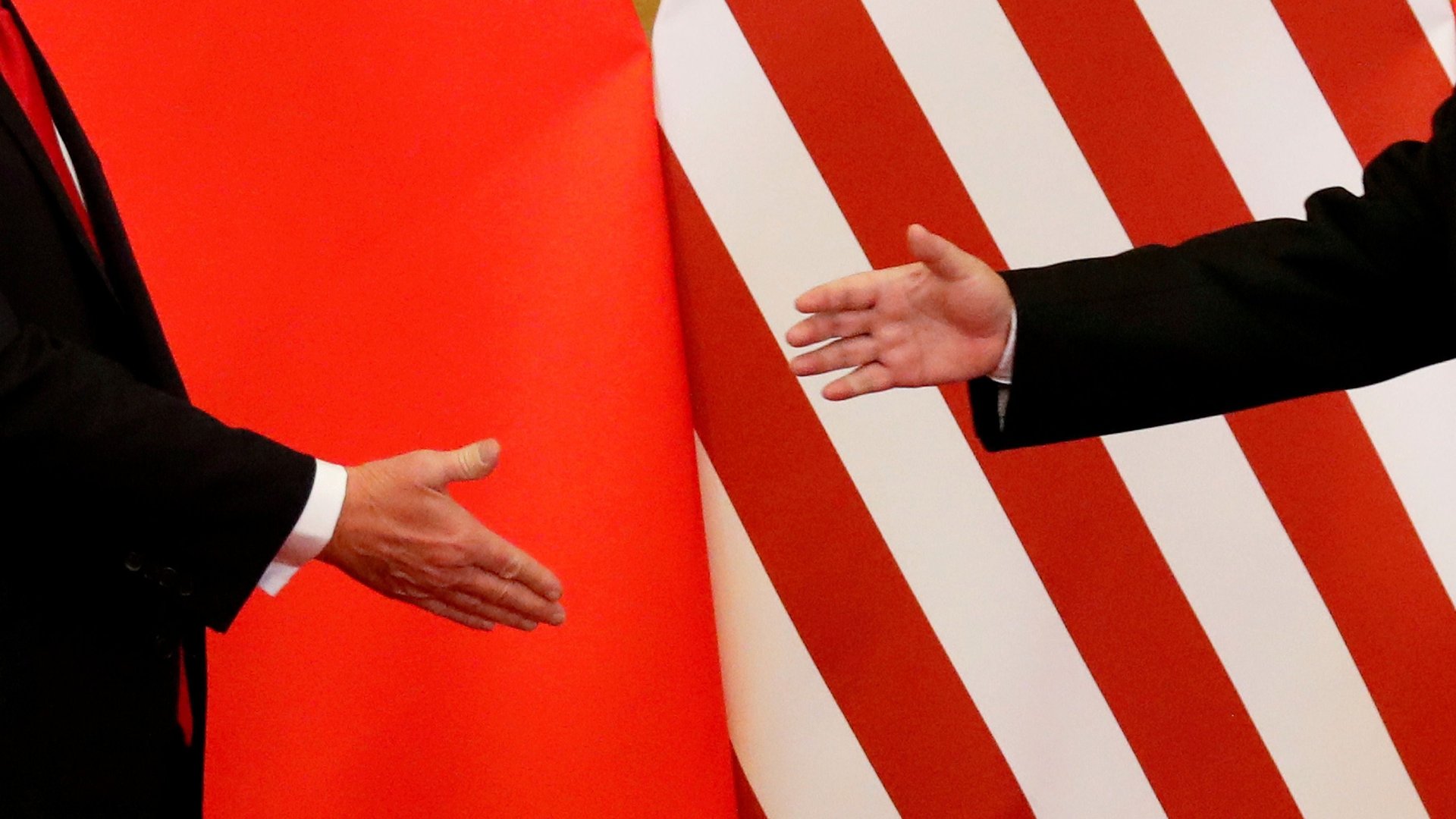What the US and China really mean when they say the trade war is off
The US and China have called a ceasefire—or perhaps even struck a peace deal—in their trade hostilities. It all depends whom you ask.


The US and China have called a ceasefire—or perhaps even struck a peace deal—in their trade hostilities. It all depends whom you ask.
On Saturday (May 19), the world’s two largest economies said in a joint statement that China will increase its purchase of American goods and services in order to reduce the US’s gigantic $375 billion trade deficit with it. The deficit with China has been a major focus of Donald Trump’s since his campaign. Both countries are holding off on imposing further punitive tariffs.
The truce, which lacks specifics and dollar figures, came after two days of intense talks between teams led by US treasury secretary Steven Mnuchin and Chinese vice-premier Liu He. But it looks like the two top negotiators came away with a different understanding on what they agreed on. In an interview with Fox News on Sunday, Mnuchin said:
We’re putting the trade war on hold, so right now we have agreed to put the tariffs on hold while we try to execute the framework.
Meanwhile, Liu told Chinese state media:
The two sides reached a consensus, will not fight a trade war, and will stop increasing tariffs on each other.
While China says the trade war and the tariffs are now over, the US insists it’s just putting a pause on them. By putting different interpretations on the development, both sides avoid appearing to be making big concessions to the other.
Trade tensions between the US and China have worsened in the past few months, as the two sides threatened tit-for-tat tariff measures on key goods. While Beijing is targeting Trump’s voter base by aiming tariffs at American agricultural exports like soybeans and sorghum, Washington, meanwhile, has sought to do maximum damage at China’s tech ambitions, for example, by banning Chinese telecom ZTE from buying hardware or software from American firms. (Technically, the measures on ZTE came after it failed to comply with its plea deal for violating US sanctions on trade with Iran and North Korea, but the fate of the company has now firmly become a part of the trade war.)
There are other nuances in the Chinese translation of the joint statement, as China watchers and translation enthusiasts have noted on Twitter and WeChat (link in Chinese), interpreting these differences as Beijing watering down some of the language relating to its concessions in the joint statement. For example, while the English statement says China will “attach paramount importance” to intellectual property rights protection, a key concern of the Trump administration, the Chinese statement translates it as “attach high importance.”
The pause comes as the two countries left many of their fundamental trade disputes unsolved. For one thing, Beijing didn’t commit to (paywall) the Trump administration’s ask of a $200 billion cut in the US’s trade deficit with China. It also remains unclear if the US will retract its sanctions against ZTE, after Trump said last week he is looking into the case, and unexpectedly expressed concern about the outlook for the firm. (Mnuchin told Fox News that the ZTE case is independent of the trade talks.)
Analysts in both countries seem unimpressed about the outcome of the trade talks. “Nothing’s changed—and that’s probably the real consensus between the two delegations,” Zha Daojiong, a professor with Peking University in Beijing, told the South China Morning Post.